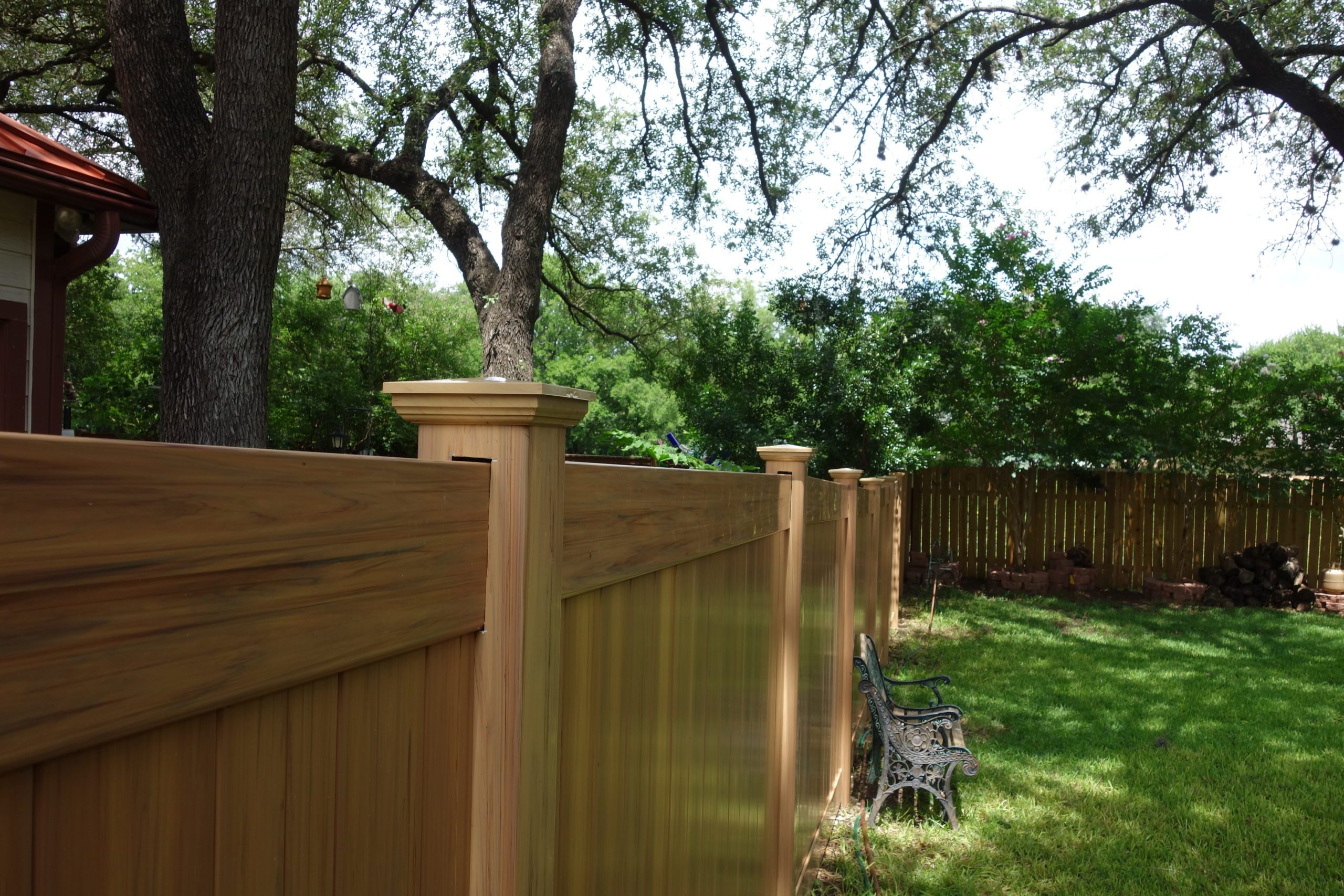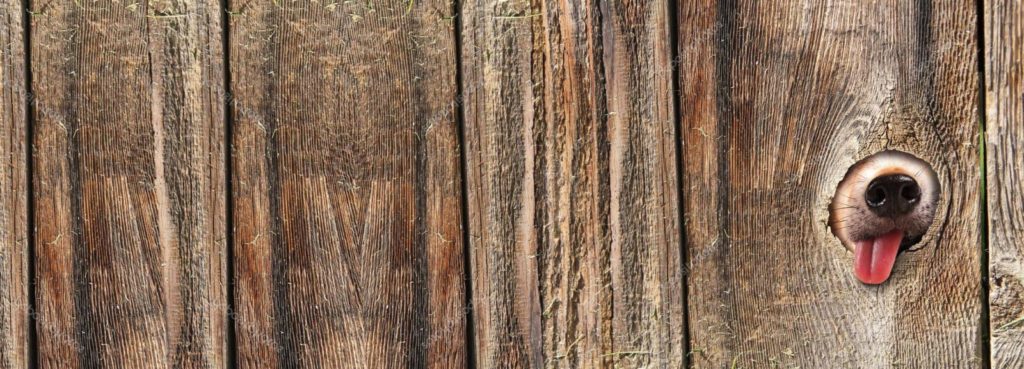Cedar vs. Pine Fences: Which One Is Right for Your Yard?
Choosing a wood fence isn’t just about looks. It’s about durability, maintenance, cost, and how long you want it to last. Cedar and pine are two of the most common wood options for residential fences. They each have strengths, but they’re built for different priorities.
Here’s a side-by-side breakdown to help you figure out which one makes more sense for your home.
Appearance: Which One Looks Better?
Cedar has a warm, reddish tone with a tight, straight grain. It naturally looks high-end without any stain or paint. Over time, cedar fades to a silvery gray if left untreated, which some people actually prefer for a more rustic, weathered look. If you want to preserve the original color, a clear sealant will do the trick.
Pine is light in color, usually a pale yellow or tan. But because it has to be pressure-treated for outdoor use, it often carries a greenish tint when new. That tint fades with time, but the grain isn’t as striking as cedar’s, and it won’t win any design awards on its own. Most people paint or stain pine to improve its appearance.
Key point: If looks are important to you, cedar wins. It has natural beauty and needs little help to look good.
Durability: Which Wood Holds Up Better?
Cedar is naturally resistant to rot, moisture, and bugs. It doesn’t require any chemical treatment to survive outdoors. That makes it an ideal fencing material, especially in wet or humid climates. It doesn’t warp easily and tends to stay straight and solid for years.
Pine, on the other hand, is a softer wood and far more vulnerable to decay if not treated. That’s why it’s always pressure-treated before being sold for fencing. While treatment helps it resist rot and pests, pine is still more likely to warp, crack, or sag over time, especially in areas with harsh weather swings.
Key point: Cedar is more durable without chemicals. Pine depends on treatment and still wears out faster.
Maintenance: What’s the Upkeep Like?
Every wood fence needs some attention eventually, but cedar makes life easier.
Cedar fencing only needs occasional cleaning and a visual check for loose or damaged boards. You can leave it unstained and let it weather naturally, or apply a sealant every few years to keep the color fresh.
Pine fences need more care. You’ll have to stain or seal them regularly to protect them from moisture and UV damage. The wood is more likely to swell, shrink, or split as the seasons change. If you don’t stay on top of maintenance, you’ll start replacing boards sooner than you’d like.
Key point: If you don’t want to spend your weekends staining your fence, cedar is the lower-maintenance option.

Lifespan: How Long Will It Last?
On average, a well-maintained cedar fence will last 20 to 25 years, sometimes longer. Even without treatment, it resists the elements naturally.
Pine fences, even when pressure-treated, usually last about 10 to 15 years before they start to deteriorate. If you fall behind on maintenance, that number drops fast.
Key point: Cedar costs more upfront, but gives you a fence that lasts nearly twice as long.
Cost: What’s the Price Difference?
This is where pine pulls ahead. It’s widely available and significantly cheaper than cedar. For large fencing projects, like enclosing several acres, pine might be the only realistic choice if you’re working within a tight budget.
Cedar is more expensive across the board—material, labor, and sometimes even availability. But its longer lifespan and lower maintenance costs often make it the better value in the long run.
Key point: Pine is cheaper now. Cedar is cheaper over time.
Installation: What to Know
Cedar boards are lighter and easier to handle than pressure-treated pine, which can speed up installation. That said, pine is more widely available and easier to find at local home improvement stores.
If you’re hiring a fence contractor, they’ll work with either one, but some pros prefer cedar because it’s less likely to split or warp during installation.
Key point: Cedar is easier to install. Pine is easier to find.
Quick Comparison: Cedar vs. Pine at a Glance
| Factor | Cedar | Pine |
| Appearance | Rich color, natural grain | Pale with a greenish tint |
| Durability | Naturally rot- and bug-resistant | Needs chemical treatment |
| Maintenance | Low | High |
| Lifespan | 20–25 years | 10–15 years |
| Cost | Higher upfront | Lower upfront |
| Installation | Lighter, easier to handle | Heavier, widely available |
Which Should You Choose?
- Pick cedar if you want something that looks great, lasts longer, and doesn’t demand constant maintenance. It’s ideal for homeowners who see the fence as a long-term investment and prefer natural materials that don’t need chemical treatment.
- Go with pine if you’re working with a tighter budget and are willing to put in more upkeep over the years. It’s a solid option for rental properties, temporary fencing, or large enclosures where upfront cost matters more than long-term performance.
There’s no wrong answer—it depends on your goals, your budget, and how much maintenance you’re okay with. Think about how long you plan to stay in the home, how much time you want to spend on upkeep, and whether visual appeal is a priority. A fence isn’t just a barrier—it’s part of your landscape, so choose the material that fits both your needs and your expectations.
Need help in deciding? Talk to the Experts
Choosing the right fence material isn’t always cut and dry. That’s where we come in. At Alamo Decks and Fence, we’ve helped homeowners all over the region build fences that look great and stand up to the elements—whether that means cedar’s natural resilience or pine’s budget-friendly appeal.
Reach out today to schedule a quote and get expert guidance that saves you time, money, and frustration.

BUILD YOUR FENCE TODAY!
If you’re looking to beautify and enhance the security of your property, turn to Alamo Decks & Fence in Bexar County. We truly value our customers, which is why you can trust us to build your fence using the highest quality materials at the best prices possible.
